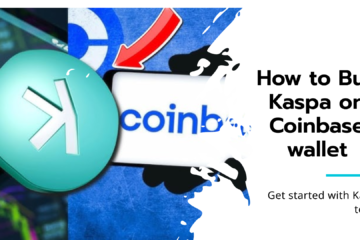The options market is a complex ecosystem, teeming with opportunities and challenges. One of the key skills for successful option trading is knowing how to use option block trades to spot unsupported options. These options can often present significant trading opportunities, but they can also be traps for the unwary. This blog will let you into the world of option block trades, a powerful tool for identifying these anomalous options.
What Are Option Block Trades?
Option block trades are big option contracts that are bought and sold directly between two entities. Away from the normal market. These trades are typically so significant that they do not take place on conventional exchanges. However, they are traded over-the-counter to avoid affecting the market prices and to ensure that the trade occurs at a preferred price.
Large block trades are typically conducted by institutional investors such as hedge funds. Mutual funds or pension funds as they have deep pockets which enable them to make large trades on the market. Due to the massive size of these trades, they may hint at big movements in the underlying asset. Which is why active traders pay close attention to them.
Understand the Unsupported and Unusual Options
Before proceeding to the topic of how to spot unsupported and unusual options. It’s essential to understand what these terms mean.
- Unsupported Options: These are trades that are considered options such that they do not follow a similar underlying shift in the price or emotions. For instance, if there is a huge demand for call options on a particular stock. But the prices of the stock do not rise or even decline. This could be an indication that the call options are overpriced. Unsupported options must be handled with care as it may indicate that the trader is engaging in speculative or irrational activity.
- Unusual Options: The intention of the definition for unusual options is to equate it to options trades that would generally be considered odd. This may be because of the size of the trade. The type of the option being traded or the time at which the trade is being made. High options turnover can be indicative of a change in the underlying security as large players are likely to have insider information or strongly held belief in an event that will affect the price of the security.
How to Use Option Block Trades to Spot Unsupported Options
Learning how to use option block trades to spot unsupported options involves identifying large trades that do not align with the movement of the underlying asset or prevailing market sentiment.
- Monitor Block Trade Alerts: Many financial platforms and services offer block trade alerts that notify traders of large options transactions. By monitoring these alerts, you can quickly identify when significant block trades are taking place. Pay particular attention to trades that seem out of sync with the underlying asset’s price movement.
- Compare with Underlying Asset Movement: Once you identify a block trade, compare it with the movement of the underlying asset. If you notice that a large trade has occurred. But there is no corresponding movement in the underlying asset, it may be an unsupported option. This could be a sign of speculative trading or a potential mispricing in the market.
- Evaluate Market Sentiment: Unsupported options often arise when there is a disconnect between market sentiment and the options market. Use tools like sentiment analysis or news aggregators to gauge the overall mood of the market. If the sentiment around a stock is generally negative. But you see large purchases of call options, this could indicate an unsupported option trade.
- Check Open Interest: Open interest refers to the total number of outstanding options contracts for a particular strike price and expiration date. By analyzing open interest, you can determine if a block trade is being supported by other market participants. If you see a significant block trade with low open interest, it could indicate an unsupported option.
How to Use Option Block Trades to Spot Unusual Options
Understanding how to use option block trades to spot unusual options can help you detect unexpected large trades that may signal significant market moves or upcoming events.
-
Track Unusually Large Trades:
One of the first steps in spotting unusual options is tracking trades that are abnormally large. This could be a block trade of an extraordinary size. Either in terms of the number of contracts or the dollar value of the trade. These types of trades can often signal that something significant is about to happen with the underlying asset.
-
Analyze Volume Spikes:
Unusual options activity often accompanies spikes in volume. When there is a sudden surge in options volume for a particular stock. It could be a sign that large investors are positioning themselves ahead of a major event. By monitoring volume data, you can identify when unusual options activity is occurring.
-
Look for Implied Volatility Changes:
Implied volatility (IV) is a measure of the market’s expectation of future price movements. When large block trades occur, they can cause a shift in IV. For example, if there is a significant purchase of call options, IV might rise as the market anticipates a potential price increase. By tracking changes in IV. You can identify unusual options activity that may signal an upcoming move in the underlying asset.
-
Pay Attention to Unusual Strike Prices:
Unusual options activity is not always limited to large trades. Sometimes, unusual activity can occur at out-of-the-money (OTM) strike prices that are far from the current price of the underlying asset. For example, if a block trade occurs at a strike price that is significantly above or below the current price. This could indicate that the trader expects a substantial move in the underlying asset.
-
Monitor Insider Activity:
Insiders, such as company executives and employees, 0ften have access to non-public information about a company’s future performance. By monitoring insider trading activity. You can gain insights into unusual options trades that may be driven by insider knowledge. Many traders keep a close eye on insider activity to spot unusual options trades that could signal an upcoming event like earnings surprises, mergers, or regulatory actions
Wrapping Up
The option block trades provide an open view to the actions taken by institutional investors and are valuable in identifying unsupported and unusual options. For identifying the potential market moves. It is possible to pay attention to the block trades, compare them with the overall market sentiment and use the analytical tools. However, these are trades that must be entered with care and the proper money management measures put in place to ensure that you do not lose your money.
Recommended Post:
What Role Does Competition Play In International Trade
Does Trader Joe’s Deliver
Do You Have to Fight Dementz in Rogue Trader
How to Reset MetaTrader 5 Window Format to Default




